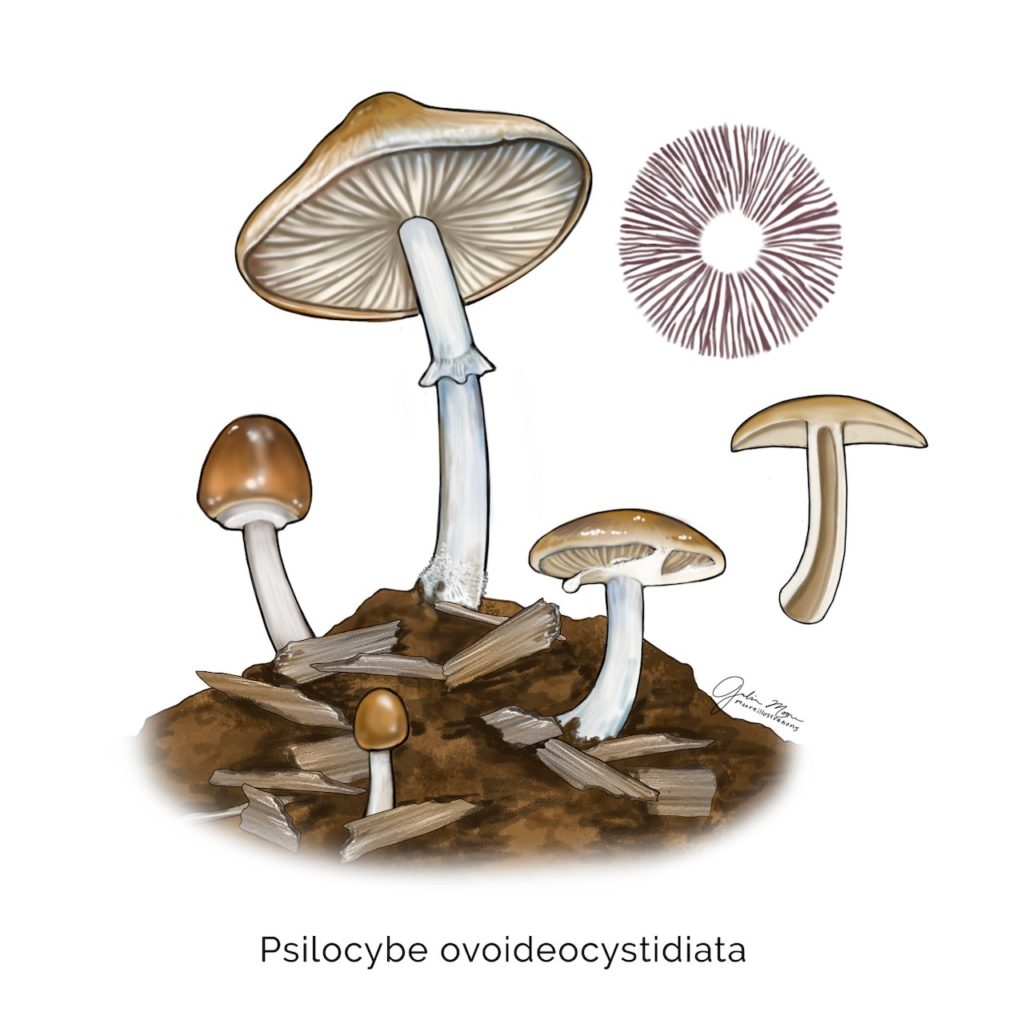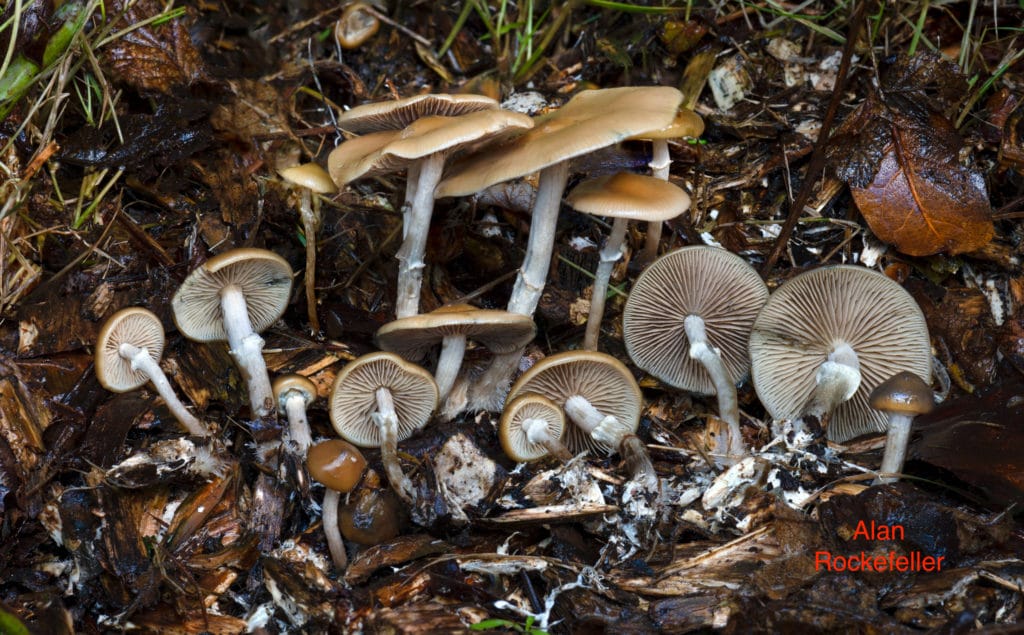Overview
Psilocybe ovoideocystidiata is a spring fruiting mushroom that has only recently been found on the west coast. It is assumed to be an introduced species and is found most often if not exclusively in urban environments. Given the interest in this mushroom within the psychedelic community, its distribution is surely to expand.
Identification
The easiest way to identify this mushroom is to first identify it as a Psilocybe species which is mot reliable with a spore print, bruising reaction, and ideally a few specimens of varying levels of maturity.
Characteristics of Psilocybe mushrooms
Spores: Dark Purple
Cap: 1-3cm. Light brown or caramel-colored when young. More varied with age. Hygrophanous (color-changing with water saturation). Possible remnants of veil tissue along the edge. Blue-green bruising. May have purple dust from spores on the cap when growing in dense clusters.
Stem: Light-colored. Under 1cm thick, typically 2-5cm tall. The stem may show blue-bruising, and have remnants from a partial veil that had previously covered the gills.
Habitat: On wood chips or other woody debris in urban areas. Uncommon, or rarely observed, in non-urban or forested areas.
Identifying Psilocybe ovoideocystidiata
After confirming the genus through spore prints, bruising, and other characteristics, P ovoideocystidiata is nearly guaranteed when found fruiting in the spring. Identification to the species-level is more difficult if found in the fall.
Lookalikes
The vast majority of little brown mushrooms (LBMs) are not Psilocybe species. Check this link to view species in a common genus of LBMs known as Psathyrella.
Psathyrella in Washington and Oregon
This is just one of many genera of LBMs in the Pacific Northwest.
Psilocybe ovoideocystidiata distribution
P ovoideocystidiata is found primarily in urban areas on woodchips and other woody debris. This mushroom is an introduced species and its range is likely increasing on the west coast.


